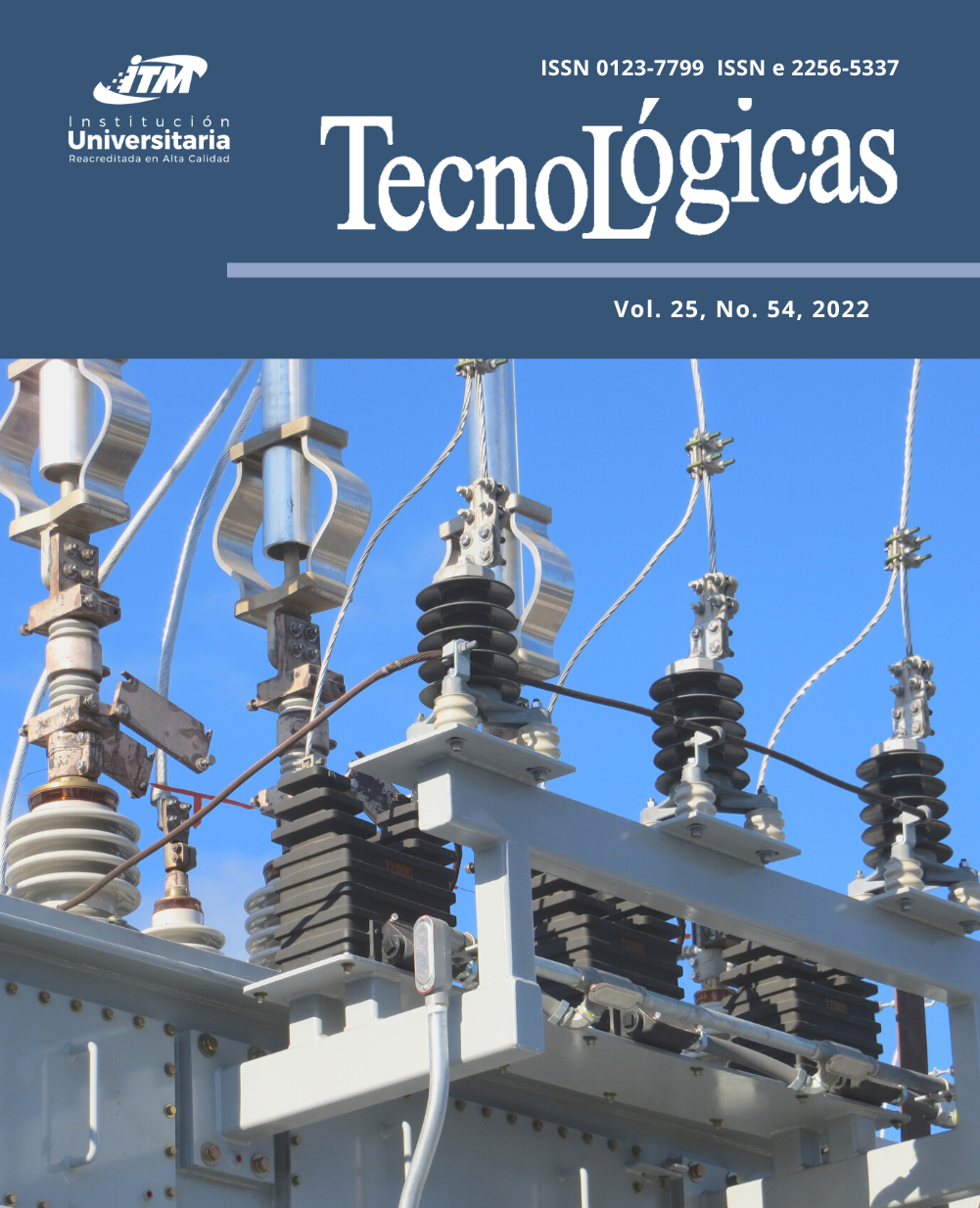A Model for Quantifying Expected Effects of Demand-Side Management Strategies
Abstract
This paper presents a quantitative dynamic model that can assess the response of a set of users to different Demand-Side Management strategies that are available. The main objective is to conceptualize, implement, and validate said model. As a result of a literature review, the model includes classical demand response techniques and proposes new customer actions and other novel aspects, such as energy culture and energy education. Based on the conceptualization of the model, this paper presents the structure that interrelates customer actions, demand proposals, cost-benefit analysis, and customer response. It also details the main aspects of the mathematical model, which was implemented in the Modelica modeling language. This paper includes simulations of intra-day and inter-day load shifting strategies using real data from the electricity sector in Colombia and different tariff factors. Finally, the results obtained show changes in daily consumption profiles, energy cost, system power peak, and load duration curve. Three conclusions are drawn: (i) Energy culture and pedagogy are essential to accelerate customer response time. (ii) The amount of the bill paid by customers decreases more quickly in the intra-day strategy than in its inter-day counterpart; in both cases, the cost reduction percentage is similar. (iii) Tariff increases accelerate customer response, and this relationship varies according to the Demand-Side Management strategies that are available
References
S. Al-Alawi; S. Islam, “Principles of electricity demand forecasting. I. Methodologies”, Power Eng. J., vol. 10, no. 3, pp. 139–143, Jun. 1996. https://ieeexplore.ieee.org/document/503164
P. Šparl; D. Kofjač; A. Brezavšček, “The use of quantitative methods for electricity demand forecasting”, in 32nd International Conference on Organizational Science Development. Portorož, Slovenia, 2013. https://www.researchgate.net/publication/260633824_The_use_of_quantitative_methods_for_electricity_demand_forecasting
C. A. Garcia Botero; W. A. Martínez Botero, “Modelo para la proyección de demanda de energía eléctrica en Colombia”, Unidad de Planeación Minero-Energética (UPME), 2014, p. 18. https://www.asocodis.org.co/docs/xi-jornada/sesion1/1.%20ModeloparalaProyecciondeDemandadeEnergiaElecricaenColombia.pdf
D. López-García; A. Arango-Manrique; S. X. Carvajal-Quintero, “Integration of distributed energy resources in isolated microgrids: the Colombian paradigm,” Tecnológicas, vol. 21, no. 42, pp. 13–30, May. 2018. https://doi.org/10.22430/22565337.774
S. Aman; M. Frincu; C. Chelmis; M. Noor; Y. Simmhan; V. K. Prasanna, “Prediction models for dynamic demand response: Requirements, challenges, and insights”, in 2015 IEEE International Conference on Smart Grid Communications (SmartGridComm), 2015, pp. 338–343. https://doi.org/10.1109/SmartGridComm.2015.7436323
W.-C. Hong, Intelligent Energy Demand Forecasting, Springer London. 2013. https://doi.org/10.1007/978-1-4471-4968-2
S. Iqbal et al., “A comprehensive review on residential demand side management strategies in smart grid environment”, Sustainability, vol. 13, no. 13, Jul. 2021. https://doi.org/10.3390/su13137170
D. Valencia-Lopez; S. X. Carvajal-Quintero; J. Pineda-Agudelo, “Design of demand management programs for the efficient use of electricity by industrial users”, Ingeniería y competitivdad. vol. 19, no. 1, pp. 207–218, Jun. 2017. http://www.scielo.org.co/pdf/inco/v19n1/0123-3033-inco-19-01-00207.pdf
J. D. Molina; L. F. Buitrago; J. A. Zapata, “Design of Demand Response Programs: Customer Preferences Experiences in Colombia”, in 2020 IEEE PES Transmission & Distribution Conference and Exhibition - Latin America (T&D LA), Montevideo, 2020, pp. 1–6. https://doi.org/10.1109/TDLA47668.2020.9326246
J. Molina; L. Buitrago; S. Téllez; S. Giraldo; J. Uribe, “Demand Response Program Implementation Methodology: A Colombian Study Case”, Trans. Energy Syst. Eng. Appl., vol. 3, no. 1, pp. 13–19, Mar. 2022. https://doi.org/10.32397/tesea.vol3.n1.3
I. Lampropoulos; W. L. Kling; P. F. Ribeiro; J. van den Berg, “History of demand side management and classification of demand response control schemes”, in 2013 IEEE Power & Energy Society General Meeting, Vancouver, 2013, pp. 1–5. https://doi.org/10.1109/PESMG.2013.6672715
J. S. Vardakas; N. Zorba; C. V Verikoukis, “A Survey on Demand Response Programs in Smart Grids: Pricing Methods and Optimization Algorithms”, IEEE Commun. Surv. Tutorials, vol. 17, no. 1, pp. 152–178, 2015. https://doi.org/10.1109/COMST.2014.2341586
M. Hussain; Y. Gao, “A review of demand response in an efficient smart grid environment”, Electr. J., vol. 31, no. 5, pp. 55–63, Jun. 2018. https://doi.org/10.1016/j.tej.2018.06.003
L. Tronchin; M. Manfren; B. Nastasi, “Energy efficiency, demand-side management and energy storage technologies – A critical analysis of possible paths of integration in the built environment”, Renew. Sustain. Energy Rev., vol. 95, pp. 341–353, Nov. 2018. https://doi.org/10.1016/j.rser.2018.06.060
United States Department of Energy and United States Department of Energy - DOE, “Benefits of Demand Response in Electricity Markets and Recommendations for achieving them. A report to the United States Congress pursuant to section 1252 of the energy policy act of 2005”, Washington, 2006. https://www.energy.gov/oe/downloads/benefits-demand-response-electricity-markets-and-recommendations-achieving-them-report
S. Téllez; O. Duarte, “Gestión de la Demanda en redes eléctricas inteligentes: Revisión y futuras estrategias”, En V CIUREE: Congreso Internacional de Eficiencia y Gestión Energética. 2016. https://doi.org/10.13140/RG.2.2.22085.24805
C. W. Gellings, “The concept of demand-side management for electric utilities”, Proc. IEEE, vol. 73, no. 10, pp. 1468–1470, 1985. https://doi.org/10.1109/PROC.1985.13318
XM, “Históricos de demanda”. https://www.xm.com.co/consumo/historicos-de-demanda
UPME-SIMEC, “Sistema de Información Eléctrico Colombiano SIEL. Demanda de energía”, 2021. http://www.siel.gov.co/Inicio/Demanda/tabid/60/Default.aspx
H. Elmqvist, “A Structured Model Language for Large Continuous Systems”, (Tesis Doctoral), Department of Automatic Control, Lund Institute of Technology, Lund, 1978. https://lup.lub.lu.se/search/ws/files/4602422/8570492.pdf
P. Fritzson, Principles of Object-Oriented Modeling and Simulation with Modelica 3.3: A Cyber-Physical Approach. Wiley-IEEE Press, 2015.
M. Association, Modelica Association. https://modelica.org/association
Modelica, Modelica - A Unified Object-Oriented Language for Systems Modeling Language Specification. Version 3.3. Modelica Association, 2012. https://modelica.org/documents/ModelicaSpec33Revision1.pdf
P. Fritzson et al., “The OpenModelica Integrated Environment for Modeling, Simulation, and Model-Based Development,” Modeling, Identification and Control., vol. 41, no. 4, pp. 241–295, 2020. https://doi.org/10.4173/mic.2020.4.1.
J. A. Restrepo; S. E. Sierra; J. A. Rosero, “Load curve characterization based on real time measurements: Case of study in Colombia”, in 2018 IEEE PES Transmission & Distribution Conference and Exhibition - Latin America (T&D-LA), 2018, pp. 1–5. https://doi.org/10.1109/TDC-LA.2018.8511768
MinMinas; Colombia Inteligente; CIAT, “Proyecto Demanda Activa GEI”, 2018. https://acmineria.com.co/acm/wp-content/uploads/2019/12/Mesa-3-Viernes-13-de-noviembre-2019-191108_GestionActivaDemanda_ColombiaInteligente-3.pdf
A. Faruqui; R. Hledik; S. Sergici, “A Survey of Residential Time- Of-Use (TOU) Rates”, The brattle group, Nov. 2019. https://www.brattle.com/wp-content/uploads/2021/05/17904_a_survey_of_residential_time-of-use_tou_rates.pdf
Downloads
Copyright (c) 2022 TecnoLógicas

This work is licensed under a Creative Commons Attribution-NonCommercial-ShareAlike 4.0 International License.
Altmetric










